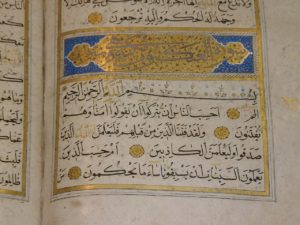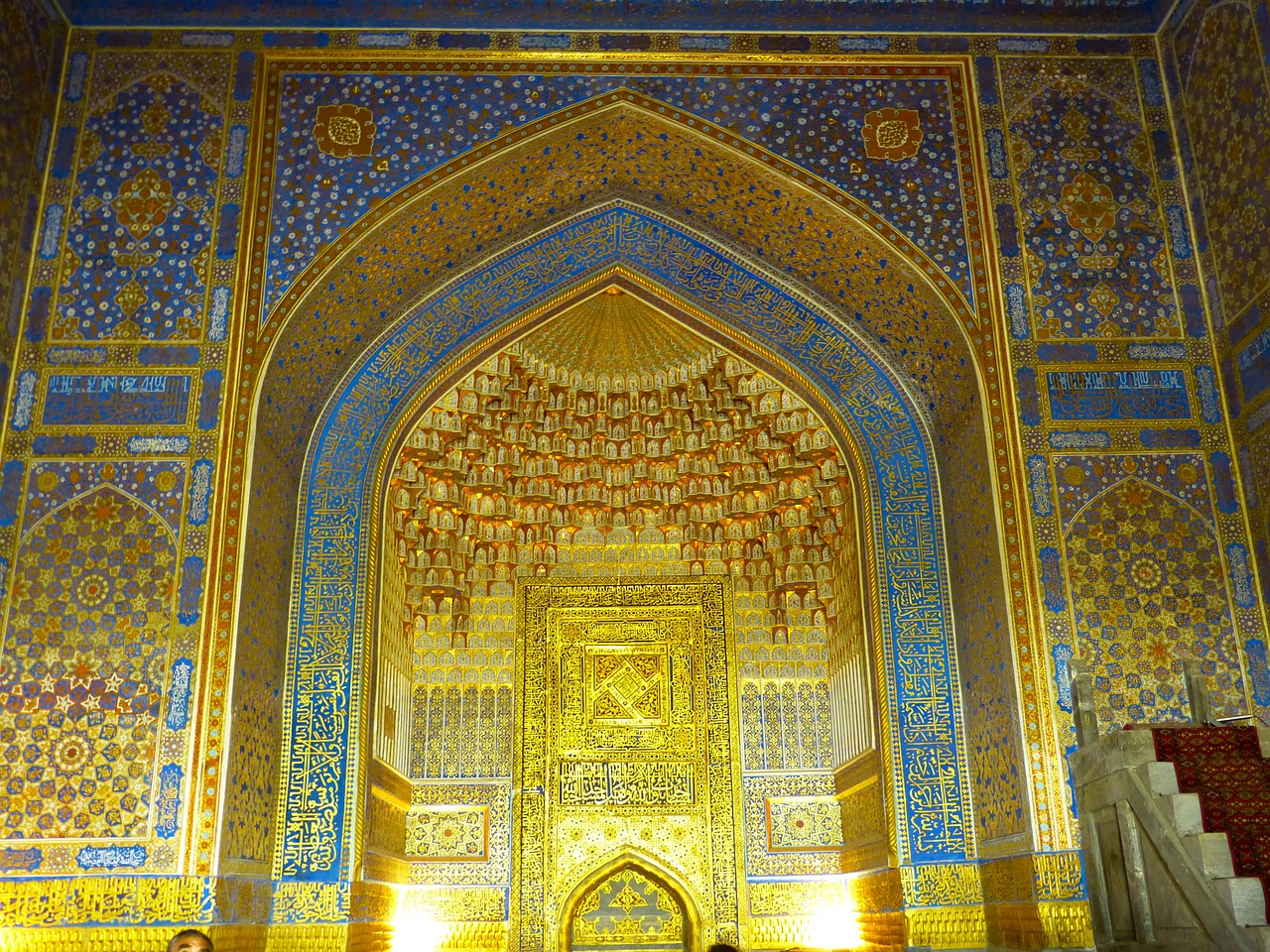People across the world are just starting to learn about the treasure of fine art traditions that are ingrained in the Afghan culture. This increased awareness is partly due to the establishment of cultural centers to preserve and showcase recently unearthed examples of ancient Afghan art. For example, the ancient Middle Eastern art of manuscript illustration, called tazhib, which fell into obscurity over the years, is experiencing a resurgence, thanks to recently uncovered artifacts.
The Origins of Tazhib
The Arabic word for gold, zahab, is the root of tazhib, which is the gilding of beautiful patterns showing plants or geometrical shapes along the margins of books. When tazhib began, artists used melted gold, which is how the practice got its name. The process eventually includes other colors, such as blue, turquoise, azure, and green, but the name remained the same.
Previous generations of Afghans used beautiful tazhib pictures to adorn scientific, religious, or cultural books, as well as collections of poems. When Islam began, religious leaders used the art form to illuminate the writings in the Quaran. However, over the last several decades, people practiced the art form less and less. In fact, it was on the edge of extinction until several key artists began to rekindle the cultural passion for this beautiful form of expression.
Historical Styles of Gilding
 Within the art of gilding, there are several different schools that correspond with historical periods. Each school has distinguishing characteristics that make it possible to classify pieces according to their school. The fourth-century examples of gilding reveal simple, line drawings, while later examples feature more lush and complex patterns.
Within the art of gilding, there are several different schools that correspond with historical periods. Each school has distinguishing characteristics that make it possible to classify pieces according to their school. The fourth-century examples of gilding reveal simple, line drawings, while later examples feature more lush and complex patterns.
The original tazhib artists used natural colors created from materials like copper and azure. They painted with brushes made of natural hair and spent hours perfecting the miniature scenes; even one misplaced stroke would ruin the page, and the artist would have to start over.
Gilding Today
Today, artists in Afghanistan are rejuvenating this art form for a new generation of Afghans to enjoy. Yalda Mushref, a modern Afghan artist, presented dozens of her tazhib creations as part of her plea to fellow Afghans to preserve their culture. According to Mushref, restoring tazhib as an art form is an act of peace and unity and a tie to the long traditions of faith and beauty that are part of their Islamic heritage.
Wishing to be true to the original style of painting, today’s artists are creating tazhib using the same tools and techniques that the original artists used. The painstaking process often yields stunning results.
The Future of Tazhib
In 2002, the Fine Arts department at Kabul University was reopened, reviving the study of art after decades of neglect. Hundreds of students enrolled in various departments, bringing sculpting, theater, photography, pottery and other fields back into the public sphere. However, a lack of funding and difficulty in obtaining supplies has slowed the development of a vital art center in Afghan.
 The discovery of over 200 ancient artifacts under the Presidential Palace in Kabul have prompted individuals and groups to contribute much needed funds to purchase supplies, hold art shows, and inspire budding artists to study their craft. One such organization is Turquoise Mountain, a British NGO that is dedicated to the restoration of the arts and craftsmanship fields in Afghanistan. Within the Murad Khani district, Turquoise Mountain has begun renovating historical buildings, restoring and opening schools, and establishing a vocational school where students train in the arts, specifically woodwork, jewelry design, calligraphy, and more.
The discovery of over 200 ancient artifacts under the Presidential Palace in Kabul have prompted individuals and groups to contribute much needed funds to purchase supplies, hold art shows, and inspire budding artists to study their craft. One such organization is Turquoise Mountain, a British NGO that is dedicated to the restoration of the arts and craftsmanship fields in Afghanistan. Within the Murad Khani district, Turquoise Mountain has begun renovating historical buildings, restoring and opening schools, and establishing a vocational school where students train in the arts, specifically woodwork, jewelry design, calligraphy, and more.
This year, Turquoise Mountain opened a global tour featuring travelling artists, who demonstrate the dedication that goes into creating the works of art. Exhibitions of tazhib artists, for example, reveal the painstaking work of crafting miniature drawings. It can take dozens of hours to complete a small piece, and one small mistake can force the artist to start the piece from scratch.
As new generations of Afghans discover the rich tradition of tazhib, there is hope that the art will continue. Young artists, such as Mushref, are part of the new face of Afghanistan’s culture, and they are ensuring the memory of their predecessors is not forgotten. More importantly, a new generation of Afghans is learning the history and prominence that their ancestors enjoyed. Tazhib, the beautiful art of generations past, is only a small part of that beauty.

